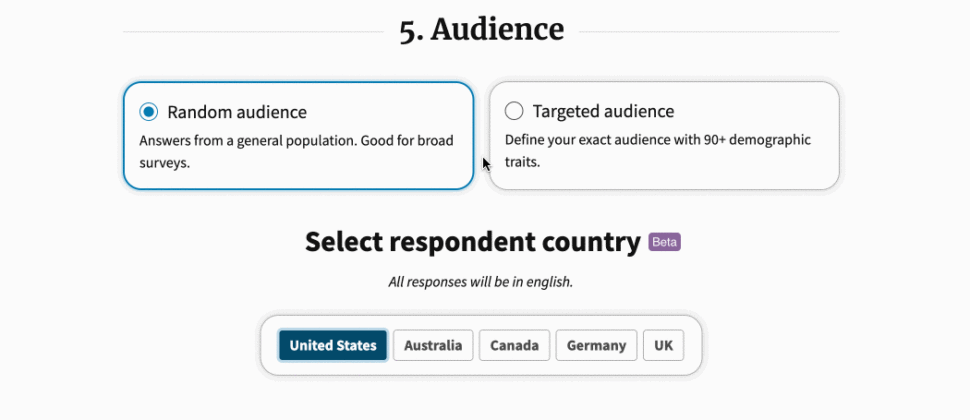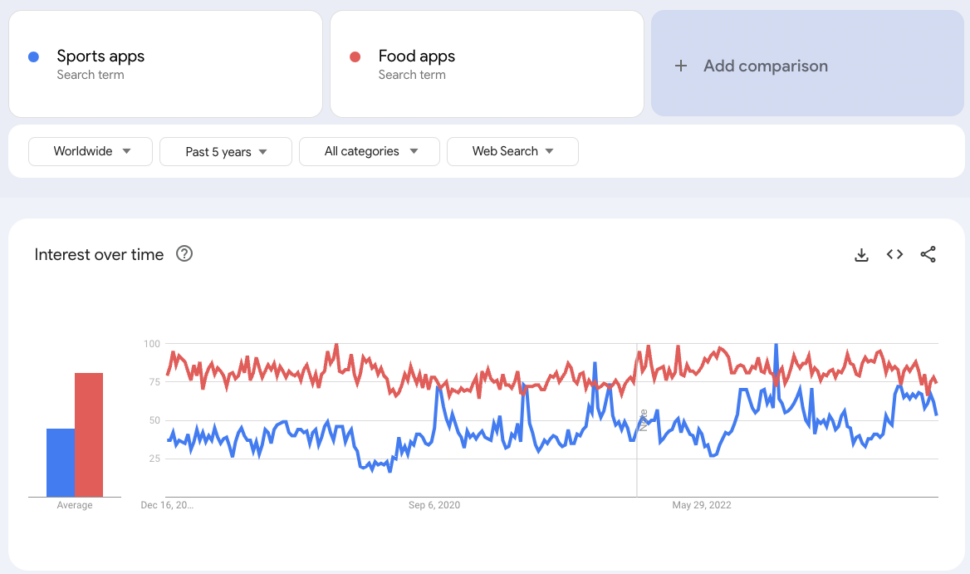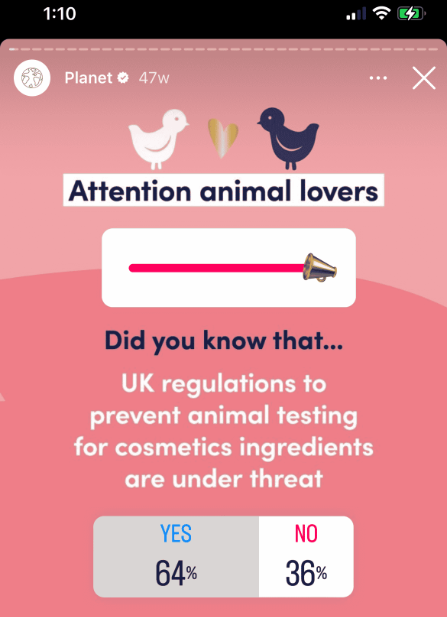Quick. Easy. Affordable. These are the words you want to hear when seeking the best user testing solution.
Whether you’re a UX designer, researcher, or marketer, you know the importance of getting feedback fast. But it’s challenging to pick the right testing solution from the many options available.
In this blog, we’ll share the best solutions for collecting user feedback for all your design, product development, and brand marketing goals. The focus on these tools is convenience when gathering information without compromising on accurate and high-quality user feedback.
1. Run polls with PickFu
PickFu makes user testing and customer research a walk in the park.
This means that you can sign up, create a poll, send it to your target audience, and get results fast – often within a few hours.
With PickFu, you can test functionality, designs, new product concepts, and more before finalizing your product, app, or website.
Polling your ideal customers is a highly effective way to do user research – giving you quantitative data (which option your audience prefers, with demographic breakdowns) as well as qualitative (why your audience prefers it or what they think).
PickFu platform gives you access to a panel of 15 million vetted respondents, which you can segment to match your ideal user base.

You can access PickFu from your web browser on any device, allowing you to collect user feedback with ease. All you have to do is:
- Sign up for free and complete the onboarding process (lasts a few minutes, max)
- Choose a poll Template from the dashboard or build a poll from scratch
- Add your question and assets (images, context, URL, etc.)
- Choose your target audience from seven countries and 90+ demographic traits
- Launch your poll and watch the results roll in – most polls complete the same day
Because running polls on PickFu is so effective and fast, you save time and money in the following ways:
- Avoid development delays when researching, which can often take days and weeks with other solutions.
- Catch critical mistakes in your design, product features, and so on by doing usability testing early.
- Launch the best version of your product, app, website, etc. from the start to avoid losing out on conversions and sales.
Our clients got actionable tips to boost their keyword rankings, 10x’d their revenue to $23 million on Amazon, and reached over a million app downloads – all with our easy remote usability testing features.
Choose between different types of polls like Open-Ended polls, Ranked polls, and Click Tests depending on your needs, or choose a poll Template to get started easily. Your test participants will not only validate your work, but they’ll also elaborate on why something works (or doesn’t).
Try running a PickFu poll to get fast, high-quality user insights today!
2. Tree testing
Tree testing is another excellent UX research method to understand if people can find topics on your app or website effortlessly. The goal is to test your product navigation and content findability.
The “tree” in tree testing refers to the site structure or hierarchy of topics.
To perform this test, you present users with a stripped-down version of your website or app’s structure in a list format. This list consists of your app or site’s categories representing different sections or pages.
You then ask users to navigate through these categories to find specific items.
For example, ask your user where to find “Refunds” on your page. They might navigate through the “Pricing” page or “FAQs” page.
You can run these tests in person or by using online user testing platforms. PickFu makes this easy to do with Open-Ended polls – just add a URL with your sitemap or content tree, and respondents will tell you how their experience went.
The goal of these testing sessions is to show you the paths that users naturally take. Tree testing gives you valuable insights into whether your site structure and content categorization is intuitive. This way, you can get feedback during the design process before you invest time and resources into full-fledged development.How long does a tree test last? It shouldn’t take more than 20 minutes or so. If you get a success rate of over 80%, i.e., most of your testers find a topic correctly, you’ve successfully organized your site content.
3. Carry out usability testing

Usability testing is a more specific strategy that falls under the umbrella of user testing.
The difference between user testing and usability testing is that user testing is a broad approach that evaluates a product or offering by testing it with real users. The goal is to learn if users likes the product, website, app, or feature overall.
Usability testing is a narrower strategy that tests whether something functions as it should. The goal is to optimize user experiences on mobile apps, web pages, and software.
Here are a few ways to carry out usability testing:
- Unmoderated usability testing: This type of online testing does not require a moderator. Participants complete tasks and answer questions while being tracked. This allows for more natural responses from users.
- A/B tests: Show your user different design options to see which one they prefer. You can accomplish this with PickFu Head-to-Head polls. By presenting alternative designs to participants, you’ll learn which option you should launch.
- Benchmark usability testing: Establish a baseline and collect data on current designs or features to create a comparison point for future usability tests. Run polls over a few days to create your baseline and then check improvements against it.
- Formative usability testing: Collect feedback during the design and development phase to iteratively improve the product before its official release. This is useful for logo testing and copy testing for your brand.
- Prototype testing: Gather feedback on your prototypes before investing in full development. PickFu can help here too – check out our Template library for a variety of use cases, including design iteration testing, idea validation, and more.
- Accessibility testing: Ensure your website or app is inclusive by running tests focused on accessibility. Gather feedback from different segments of your audience to make your designs more accessible to everyone.
How long do usability tests take? It depends. A test can last 15-20 minutes with users doing up to 10 tasks. It’s not recommended to make your usability tests last longer than an hour, so that you get more focused, specific feedback and don’t annoy or wear out your participants.
PickFu can help you navigate these various testing scenarios – just sign up for free. You’ll get diverse feedback from real people and identify any usability issues so you can optimize your website or app.
4. Run social media polls
Almost all social media platforms like LinkedIn, X (formerly Twitter), and Instagram have built-in poll features for easy engagement.
You can run a quick poll in the “Post” or “Stories” section in seconds and ask your online network to give you feedback.
This is a decent user testing tool for startups, marketers, and researchers who just need quick feedback from their social media followers, or who don’t have the spare time or budget to run a complete survey.
How long does a social media poll last? It depends on the platform. An Instagram social media poll using Stories will be live for 24 hours, and LinkedIn lets you run a poll for up to two weeks.
However, for this type of test to work, you must have an existing following of “testers” who regularly engage with you. If you do, you’ll get great feedback without spending extra money.
This solution also isn’t great if you need in-depth data, need to analyze or break down your results by demographic, or want to target specific audiences.
So go ahead and leverage social media polls if you want to run a quick practice test for your side hustle or other projects, especially in the early stages of development. It’s a different type of market survey that still generates helpful data to move you in the right direction.
5. Analytics assessments

It’s essential to go beyond running tests and also dive into your quantitative analytics data. Leveraging analytics is particularly useful for doing market research for apps.
Google Analytics, Google trends, Adobe Analytics, mobile app data, AI-powered testing solutions, and SEO tools can be useful for evaluating performance and user journeys over time. Or leverage Microsoft’s App Insights to monitor your app’s downloads, user flows, and in-app user behavior.
These tools serve as a window into your existing users’ behavior so you can tailor your product accordingly. Ask yourself what changed when you added a new feature or uploaded new content, and look at the data to understand what’s happening.
And what about running simple tests with ad campaigns?
When you run ads, you’ll get ad impressions, clicks, and conversion data. You can even turn your ad campaign into a testing method by displaying ad variations to your audience. Google Ads lets you include several headline and copy variations and will automatically display what works best.
With such information, you’ll learn where your audience is from, what their interests are, and even which mobile devices they’re on.
These assessments can provide valuable information on how users interact with your product or service. When you consistently track and analyze your data, you’ll find useful feedback to try new things.
Finally, how often should you check your analytics and ad campaigns to get useful results?
We recommend checking Google Analytics on at least a monthly basis and social media insights on at least a weekly one. This gives you enough time to understand how your content is working over time.
As for ads, monitor your results daily and analyze the summary of your ad campaign at the end. You should get insightful and actionable data.
Conclusion
User testing is now easier than ever, with several different tools and methods designed to help you test your products and offerings at every stage of development.
With PickFu, you can get quick feedback on your product, marketing, copy testing, and design without delaying production. Conduct efficient user tests with your target audience in hours and gain insights into pain points, opportunities, and blind spots in your development process. It’s the fastest way to bring your product to market or validate its viability.Browse our Template library to find a pre-built poll for your use case, or sign up to build your own poll and start user testing today!
Yes, it’s quite easy to work with user testing tools when leveraging the best platform. For businesses, PickFu is the best platform for finding the right demographic and getting quick replies. We can help you target the right users based on traits or factors like whether they use an Android or iOS device or something else.
Our panel of respondents is motivated to do their best as they make money online easily. We work similarly to usertesting.com but offer faster feedback for business owners, product developers, and marketers who want a quick testing process for apps, products, or designs.
Getting your first test on UserTesting.com can take some time and patience. The platform matches testers with appropriate tests based on the information provided during sign-up. So, it’s crucial to ensure your profile is accurate and up-to-date. Also, actively check your platform to find tests. The testing process operates on a first-come, first-served basis, so being available and alert increases your chances of landing your first test.




